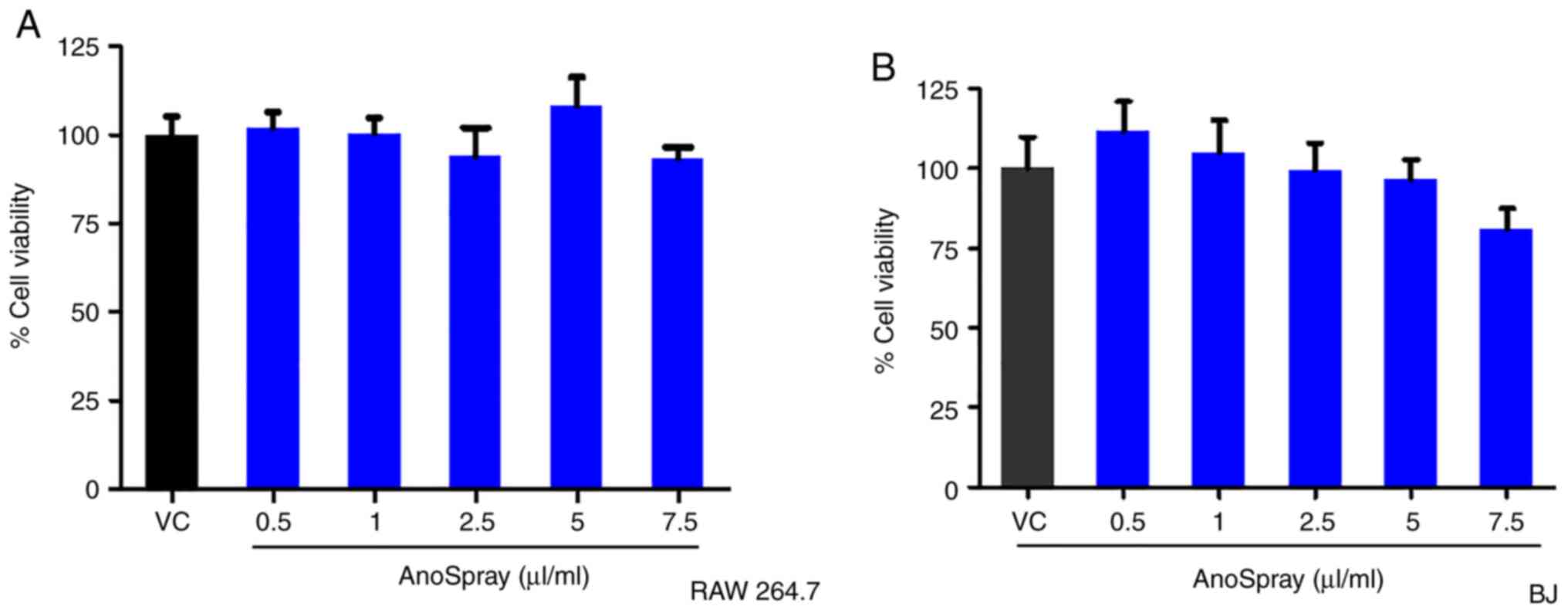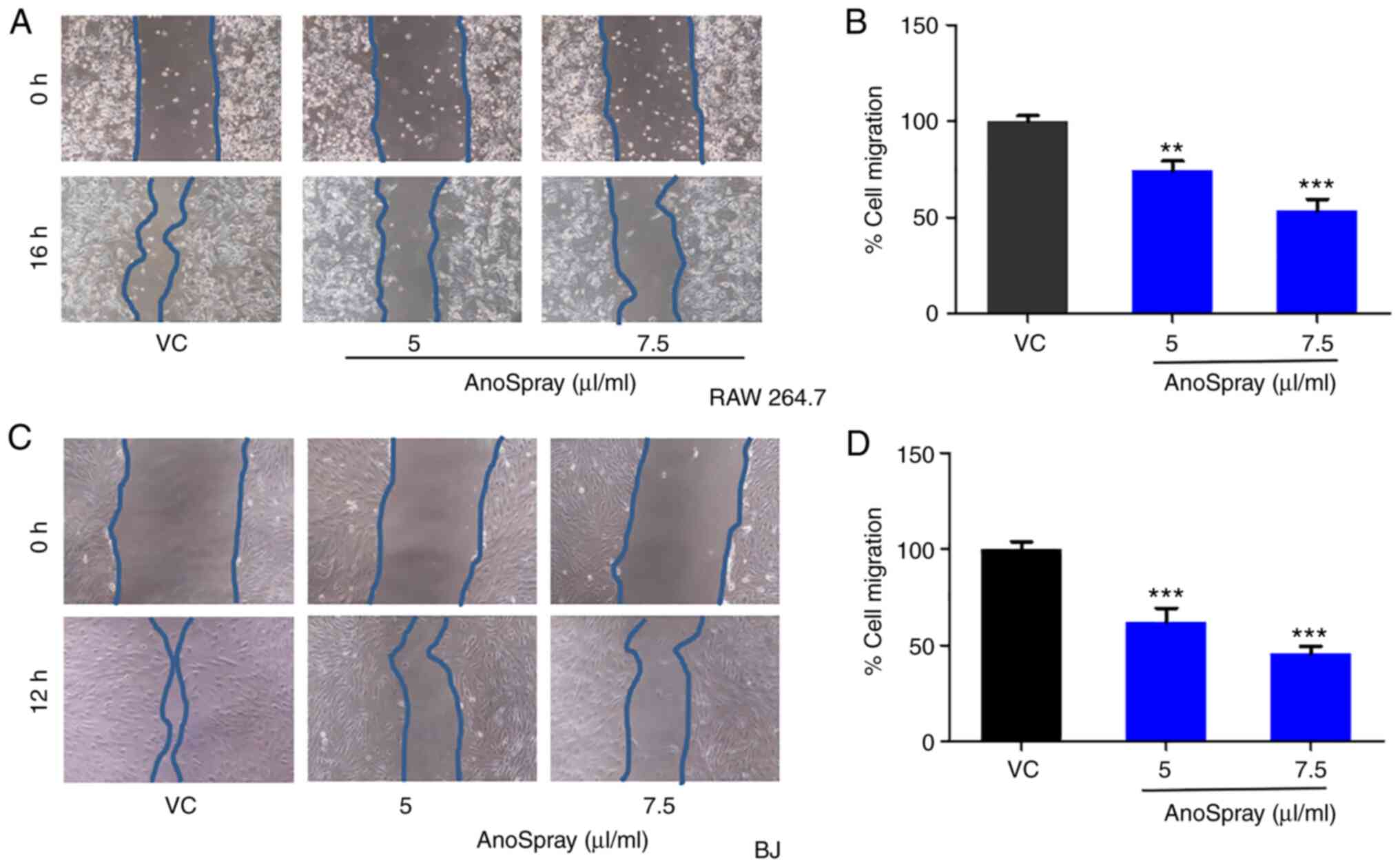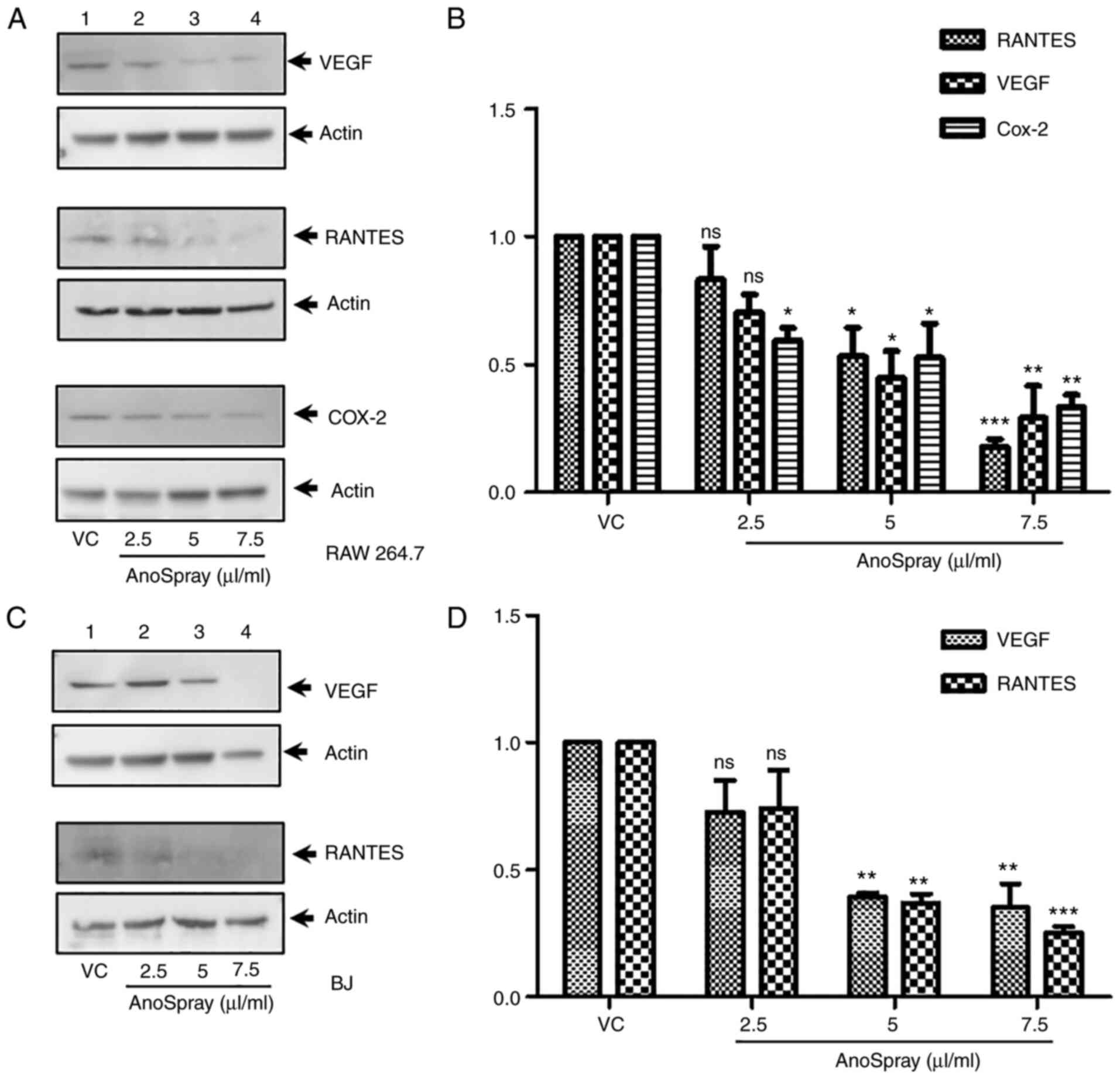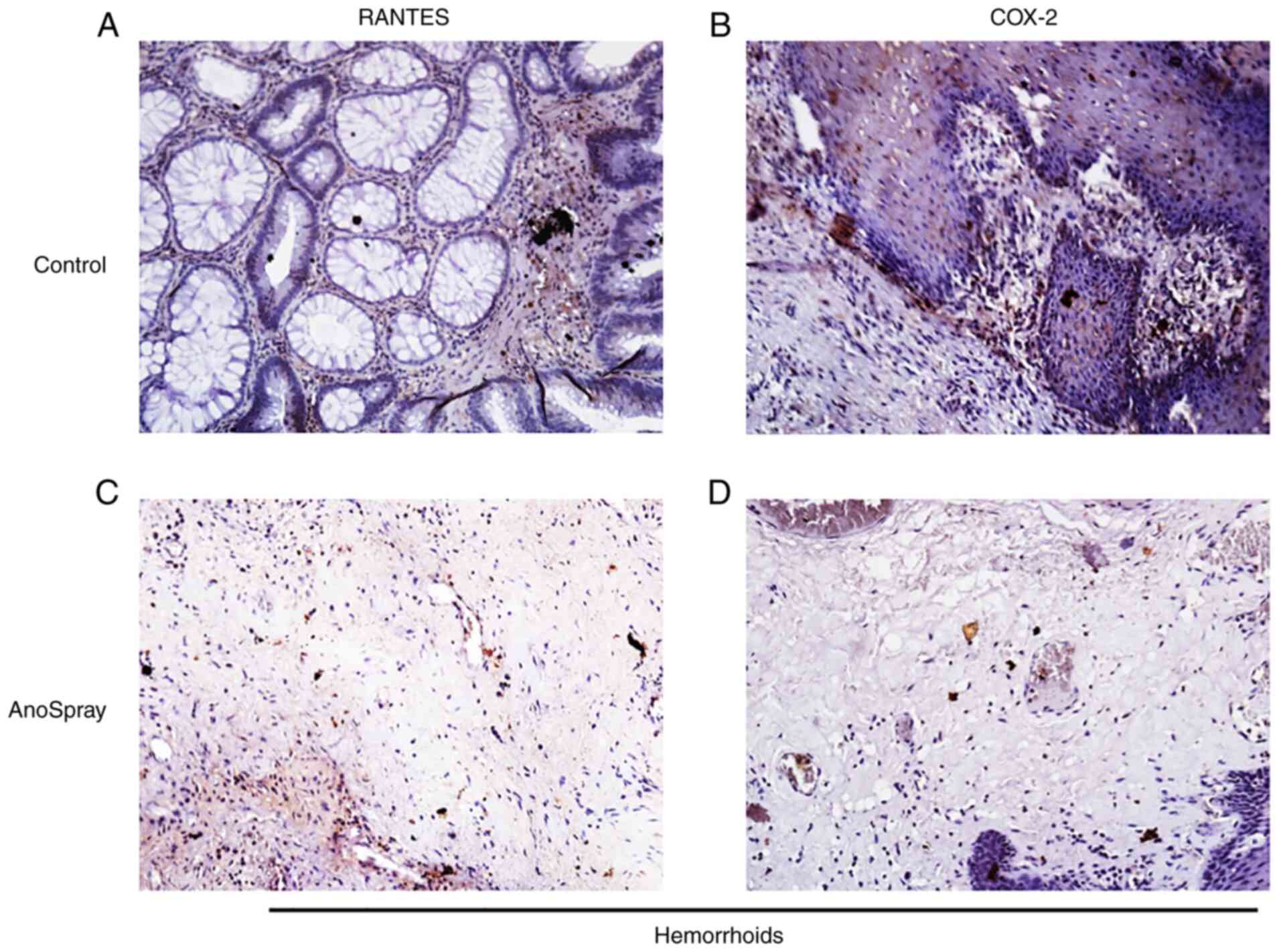|
1
|
Foxx-Orenstein AE, Umar SB and Crowell MD:
Common anorectal disorders. Gastroenterol Hepatol (NY). 10:294–301.
2014.PubMed/NCBI
|
|
2
|
Hollingshead JR and Phillips RK:
Haemorrhoids: Modern diagnosis and treatment. Postgrad Med J.
92:4–8. 2016.PubMed/NCBI View Article : Google Scholar
|
|
3
|
Mott T, Latimer K and Edwards C:
Hemorrhoids: Diagnosis and treatment options. Am Fam Physician.
97:172–179. 2018.PubMed/NCBI
|
|
4
|
Guindic LC: Treatment of uncomplicated
hemorrhoids with a Hemor-Rite® cryotherapy device: A
randomized, prospective, comparative study. J Pain Res. 7:57–63.
2014.PubMed/NCBI View Article : Google Scholar
|
|
5
|
Lorenzo-Rivero S: Hemorrhoids: Diagnosis
and current management. Am Surg. 75:635–642. 2009.PubMed/NCBI
|
|
6
|
Sun Z and Migaly J: Review of hemorrhoid
disease: Presentation and management. Clin Colon Rectal Surg.
29:22–29. 2016.PubMed/NCBI View Article : Google Scholar
|
|
7
|
Chong PS and Bartolo DC: Hemorrhoids and
fissure in ano. Gastroenterol Clin North Am. 37:627–644, ix.
2008.PubMed/NCBI View Article : Google Scholar
|
|
8
|
Jacobs D: Clinical practice. Hemorrhoids.
N Engl J Med. 371:944–951. 2014.PubMed/NCBI View Article : Google Scholar
|
|
9
|
Riss S, Weiser FA, Schwameis K, Riss T,
Mittlböck M, Steiner G and Stift A: The prevalence of hemorrhoids
in adults. Int J Colorectal Dis. 27:215–220. 2012.PubMed/NCBI View Article : Google Scholar
|
|
10
|
Lohsiriwat V: Hemorrhoids: From basic
pathophysiology to clinical management. World J Gastroenterol.
18:2009–2017. 2012.PubMed/NCBI View Article : Google Scholar
|
|
11
|
Morgado PJ, Suárez JA, Gómez LG and
Morgado PJ Jr: Histoclinical basis for a new classification of
hemorrhoidal disease. Dis Colon Rectum. 31:474–480. 1988.PubMed/NCBI View Article : Google Scholar
|
|
12
|
Han W, Wang ZJ, Zhao B, Yang XQ, Wang D,
Wang JP, Tang XY, Zhao F and Hung YT: Pathologic change of elastic
fibers with difference of microvessel density and expression of
angiogenesis-related proteins in internal hemorrhoid tissues.
Zhonghua Wei Chang Wai Ke Za Zhi. 8:56–59. 2005.PubMed/NCBI(In Chinese).
|
|
13
|
Yoon SO, Park SJ, Yun CH and Chung AS:
Roles of matrix metalloproteinases in tumor metastasis and
angiogenesis. J Biochem Mol Biol. 36:128–137. 2003.PubMed/NCBI View Article : Google Scholar
|
|
14
|
Zagriadskiĭ EA, Bogomazov AM and Golovko
EB: Conservative treatment of hemorrhoids: Results of an
observational multicenter study. Adv Ther. 35:1979–1992.
2018.PubMed/NCBI View Article : Google Scholar
|
|
15
|
Cerato MM, Cerato NL, Passos P, Treigue A
and Damin DC: Surgical treatment of hemorrhoids: A critical
appraisal of the current options. Arq Bras Cir Dig. 27:66–70.
2014.PubMed/NCBI View Article : Google Scholar
|
|
16
|
Santos GD, Coutinho CP, Meyer MM, Sampaio
DV and Cruz GM: Surgical complications in 2,840 cases of
hemorrhoidectomy by Milligan-Morgan, Ferguson and combined
techniques. J Coloproctol (Rio J). 32:271–290. 2012.
|
|
17
|
Higuero T: Update on the management of
anal fissure. J Visc Surg. 152 (Suppl 2):S37–S43. 2015.PubMed/NCBI View Article : Google Scholar
|
|
18
|
Villalba H, Villalba S and Abbas MA: Anal
fissure: A common cause of anal pain. Perm J. 11:62–65.
2007.PubMed/NCBI View Article : Google Scholar
|
|
19
|
Notaras MJ: Anal fissure and stenosis.
Surg Clin North Am. 68:1427–1440. 1988.PubMed/NCBI View Article : Google Scholar
|
|
20
|
Tranqui P, Trottier DC, Victor C and
Freeman JB: Nonsurgical treatment of chronic anal fissure:
Nitroglycerin and dilatation versus nifedipine and botulinum toxin.
Can J Surg. 49:41–45. 2006.PubMed/NCBI
|
|
21
|
Nottingham JM and Rentea RM: Anal
Fistulotomy (Seton Placement). In: StatPearls. StatPearls
Publishing, Treasure Island, FL, 2020.
|
|
22
|
Gardner IH, Siddharthan RV and Tsikitis
VL: Benign anorectal disease: Hemorrhoids, fissures, and fistulas.
Ann Gastroenterol. 33:9–18. 2020.PubMed/NCBI View Article : Google Scholar
|
|
23
|
Sharma RK and Parashar A: The management
of perineal wounds. Indian J Plast Surg. 4:352–363. 2012.PubMed/NCBI View Article : Google Scholar
|
|
24
|
Whiteford MH: Perianal abscess/fistula
disease. Clin Colon Rectal Surg. 20:102–109. 2007.PubMed/NCBI View Article : Google Scholar
|
|
25
|
Bullard KM, Trudel JL, Baxter NN and
Rothenberger DA: Primary perineal wound closure after preoperative
radiotherapy and abdominoperineal resection has a high incidence of
wound failure. Dis Colon Rectum. 48:438–443. 2005.PubMed/NCBI View Article : Google Scholar
|
|
26
|
Musters GD, Sloothaak DA, Roodbeen S, van
Geloven AA, Bemelman WA and Tanis PJ: Perineal wound healing after
abdominoperineal resection for rectal cancer: A two-centre
experience in the era of intensified oncological treatment. Int J
Colorectal Dis. 29:1151–1157. 2014.PubMed/NCBI View Article : Google Scholar
|
|
27
|
Althumairi AA, Canner JK, Gearhart SL,
Safar B, Sacks J and Efron JE: Predictors of perineal wound
complications and prolonged time to perineal wound healing after
abdominoperineal resection. World J Surg. 40:1755–1762.
2016.PubMed/NCBI View Article : Google Scholar
|
|
28
|
Christian CK, Kwaan MR, Betensky RA, Breen
EM, Zinner MJ and Bleday R: Risk factors for perineal wound
complications following abdominoperineal resection. Dis Colon
Rectum. 48:43–48. 2005.PubMed/NCBI View Article : Google Scholar
|
|
29
|
Artioukh DY, Smith RA and Gokul K: Risk
factors for impaired healing of the perineal wound after
abdominoperineal resection of rectum for carcinoma. Colorectal Dis.
9:362–367. 2007.PubMed/NCBI View Article : Google Scholar
|
|
30
|
Chang CC, Lan YT, Jiang JK, Chang SC, Yang
SH, Lin CC, Lin HH, Wang HS, Chen WS, Lin TC and Lin JK: Risk
factors for delayed perineal wound healing and its impact on
prolonged hospital stay after abdominoperineal resection. World J
Surg Oncol. 17(226)2019.PubMed/NCBI View Article : Google Scholar
|
|
31
|
Atanasov AG, Waltenberger B,
Pferschy-Wenzig EM, Linder T, Wawrosch C, Uhrin P, Temml V, Wang L,
Schwaiger S, Heiss EH, et al: Discovery and resupply of
pharmacologically active plant-derived natural products: A review.
Biotechnol Adv. 33:1582–1614. 2015.PubMed/NCBI View Article : Google Scholar
|
|
32
|
Ibrahim N', Wong SK, Mohamed IN, Mohamed
N, Chin KY, Ima-Nirwana S and Shuid AN: Wound healing properties of
selected natural products. Int J Environ Res Public Health.
15(2360)2018.PubMed/NCBI View Article : Google Scholar
|
|
33
|
Santana FP, Pinheiro NM, Mernak MI,
Righetti RF, Martins MA, Lago JH, Lopes FD, Tibério IF and Prado
CM: Evidences of herbal medicine-derived natural products effects
in inflammatory lung diseases. Mediators Inflamm.
2016(2348968)2016.PubMed/NCBI View Article : Google Scholar
|
|
34
|
Llorián-Salvador M and González-Rodríguez
S: Painful understanding of VEGF. Front Pharmacol.
9(1267)2018.PubMed/NCBI View Article : Google Scholar
|
|
35
|
Sobolewski C, Cerella C, Dicato M,
Ghibelli L and Diederich M: The role of cyclooxygenase-2 in cell
proliferation and cell death in human malignancies. Int J Cell
Biol. 2010(215158)2010.PubMed/NCBI View Article : Google Scholar
|
|
36
|
Cragg GM and Newman DJ: Natural products:
A continuing source of novel drug leads. Biochim Biophys Acta.
1830:3670–3695. 2013.PubMed/NCBI View Article : Google Scholar
|
|
37
|
Porwal A, Gandhi P and Kulkarni D: An open
label, randomized, comparative, parallel group, single center study
to evaluate safety and efficacy of Ano spray in a comparison with
betadine solution application in acute perineum wounds. Ayushdhara.
4:1409–1412. 2017.
|
|
38
|
Kumar D, Haldar S, Gorain M, Kumar S,
Mulani FA, Yadav AS, Miele L, Thulasiram HV and Kundu GC:
Epoxyazadiradione suppresses breast tumor growth through
mitochondrial depolarization and caspase-dependent apoptosis by
targeting PI3K/Akt pathway. BMC Cancer. 18(52)2018.PubMed/NCBI View Article : Google Scholar
|
|
39
|
Chakraborty G, Jain S and Kundu GC:
Osteopontin promotes vascular endothelial growth factor-dependent
breast tumor growth and angiogenesis via autocrine and paracrine
mechanisms. Cancer Res. 68:152–161. 2008.PubMed/NCBI View Article : Google Scholar
|
|
40
|
Kumar D, Kumar S, Gorain M, Tomar D, Patil
HS, Radharani NN, Kumar TV, Patil TV, Thulasiram HV and Kundu GC:
Notch1-MAPK signaling axis regulates CD133+ cancer stem
cell-mediated melanoma growth and angiogenesis. J Invest Dermatol.
136:2462–2474. 2016.PubMed/NCBI View Article : Google Scholar
|
|
41
|
Landén NX, Li D and Ståhle M: Transition
from inflammation to proliferation: A critical step during wound
healing. Cell Mol Life Sci. 73:3861–3885. 2016.PubMed/NCBI View Article : Google Scholar
|
|
42
|
Guo S and Dipietro LA: Factors affecting
wound healing. J Dent Res. 89:219–229. 2010.PubMed/NCBI View Article : Google Scholar
|
|
43
|
Chen S and Yu Q: A new theory on the cause
of anal fissure-impaction theory. J Coloproctol (Rio J).
40:321–325. 2020.
|
|
44
|
Segre D, Dal Corso HM, Landra M and
Giuffrida MC: Management of the unhealed perineal wound. In:
Inflammatory bowel disease and familial adenomatous polyposis.
Springer, Milano, pp463-472, 2006.
|
|
45
|
Bertone AL: Principles of wound healing.
Vet Clin North Am Equine Pract. 5:449–463. 1989.PubMed/NCBI View Article : Google Scholar
|
|
46
|
Derakhshan AR: Natural treatments for
fissure in ano used by traditional persian scholars, Razi (Rhazes)
and Ibn Sina (Avicenna). J Evid Based Complementary Altern Med.
22:324–333. 2017.PubMed/NCBI View Article : Google Scholar
|
|
47
|
Dey YN, Wanjari MM, Kumar D, Lomash V and
Jadhav AD: Curative effect of Amorphophallus paeoniifolius tuber on
experimental hemorrhoids in rats. J Ethnopharmacol. 192:183–191.
2016.PubMed/NCBI View Article : Google Scholar
|
|
48
|
Azeemuddin M, Viswanatha GL, Rafiq M,
Thippeswamy AH, Baig MR, Kavya KJ, Patki PS and Shyam R: An
improved experimental model of hemorrhoids in rats: Evaluation of
antihemorrhoidal activity of an herbal formulation. ISRN Pharmacol.
2014(530931)2014.PubMed/NCBI View Article : Google Scholar
|
|
49
|
Wojdasiewicz P, Poniatowski ŁA and
Szukiewicz D: The role of inflammatory and anti-inflammatory
cytokines in the pathogenesis of osteoarthritis. Mediators Inflamm.
2014(561459)2014.PubMed/NCBI View Article : Google Scholar
|
|
50
|
Sprague AH and Khalil RA: Inflammatory
cytokines in vascular dysfunction and vascular disease. Biochem
Pharmacol. 78:539–552. 2009.PubMed/NCBI View Article : Google Scholar
|
|
51
|
Fitzgerald SM, Lee SA, Hall HK, Chi DS and
Krishnaswamy G: Human lung fibroblasts express interleukin-6 in
response to signaling after mast cell contact. Am J Respir Cell Mol
Biol. 30:585–593. 2004.PubMed/NCBI View Article : Google Scholar
|
|
52
|
Arango Duque G and Descoteaux A:
Macrophage cytokines: Involvement in immunity and infectious
diseases. Front Immunol. 5(491)2014.PubMed/NCBI View Article : Google Scholar
|
|
53
|
Lohsiriwat V: Treatment of hemorrhoids: A
coloproctologist's view. World J Gastroenterol. 21:9245–9252.
2015.PubMed/NCBI View Article : Google Scholar
|
|
54
|
Mounsey AL, Halladay J and Sadiq TS:
Hemorrhoids. Am Fam Physician. 84:204–210. 2011.PubMed/NCBI
|
|
55
|
Bhardwaj R and Parker MC: Modern
perspectives in the treatment of chronic anal fissures. Ann R Coll
Surg Engl. 89:472–478. 2007.PubMed/NCBI View Article : Google Scholar
|
|
56
|
Dias DA, Urban S and Roessner U: A
historical overview of natural products in drug discovery.
Metabolites. 2:303–336. 2012.PubMed/NCBI View Article : Google Scholar
|
|
57
|
Thakur R, Jain N, Pathak R and Sandhu SS:
Practices in wound healing studies of plants. Evid Based Complement
Alternat Med. 2011(438056)2011.PubMed/NCBI View Article : Google Scholar
|
|
58
|
Chandel RS and Rastogi RP: Triterpenoid
saponins and sapogenins: 1973-1978. Phytochemistry. 19:1889–1908.
1980.
|
|
59
|
Harbone JB: Phytochemical methods: A guide
to modern techniques of plants analysis. Fakenham Press Limited:
New York, NY, USA, 1973.
|
|
60
|
Tsala DE, Amadou D and Habtemariam S:
Natural wound healing and bioactive natural products.
Phytopharmacology. 4:532–560. 2013.
|
|
61
|
Ricciotti E and FitzGerald GA:
Prostaglandins and inflammation. Arterioscler Thromb Vasc Biol.
31:986–1000. 2011.PubMed/NCBI View Article : Google Scholar
|
|
62
|
Merecz-Sadowska A, Sitarek P, Śliwiński T
and Zajdel R: Anti-inflammatory activity of extracts and pure
compounds derived from plants via modulation of signaling pathways,
especially PI3K/AKT in macrophages. Int J Mol Sci.
21(9605)2020.PubMed/NCBI View Article : Google Scholar
|
|
63
|
Potdar D, Hirwani RR and Dhulap S:
Phyto-chemical and pharmacological applications of Berberis
aristata. Fitoterapia. 83:817–830. 2012.PubMed/NCBI View Article : Google Scholar
|
|
64
|
Acharya N, Acharya S, Shah U, Shah R and
Hingorani L: A comprehensive analysis on Symplocos racemosa
Roxb.: Traditional uses, botany, phytochemistry and pharmacological
activities. J Ethnopharmacol. 181:236–251. 2016.PubMed/NCBI View Article : Google Scholar
|
|
65
|
Shenoy RR, Sudheendra AT, Nayak PG, Paul
P, Kutty NG and Rao CM: Normal and delayed wound healing is
improved by sesamol, an active constituent of Sesamum
indicum (L.) in albino rats. J Ethnopharmacol. 133:608–612.
2011.PubMed/NCBI View Article : Google Scholar
|
|
66
|
Rameshwar V, Kishor D, Tushar G, Siddharth
G and Sudarshan G: A pharmacognostic and pharmacological overview
on Bombax ceiba. Sch Acad J Pharm. 3:100–107. 2014.
|
|
67
|
Ananthakrishnan R and Rameshkumar KB:
Phytochemicals and bioactivities of Garcinia indica
(thouars) choisy-a review. Divers Garcinia Species West Ghats:
Phytochem Perspect. 142:151–161. 2016.
|
|
68
|
Sen PK and Garg S: Wound repair and
regenerating effect of ethyl acetate soluble fraction of ethanolic
extract of Cinnamomum camphora leaves in wistar albino rats.
J Drug Deliv Ther. 9:1173–1176. 2019.
|
|
69
|
Modarresi M, Farahpour MR and Baradaran B:
Topical application of Mentha piperita essential oil
accelerates wound healing in infected mice model.
Inflammopharmacology. 27:531–537. 2019.PubMed/NCBI View Article : Google Scholar
|


















